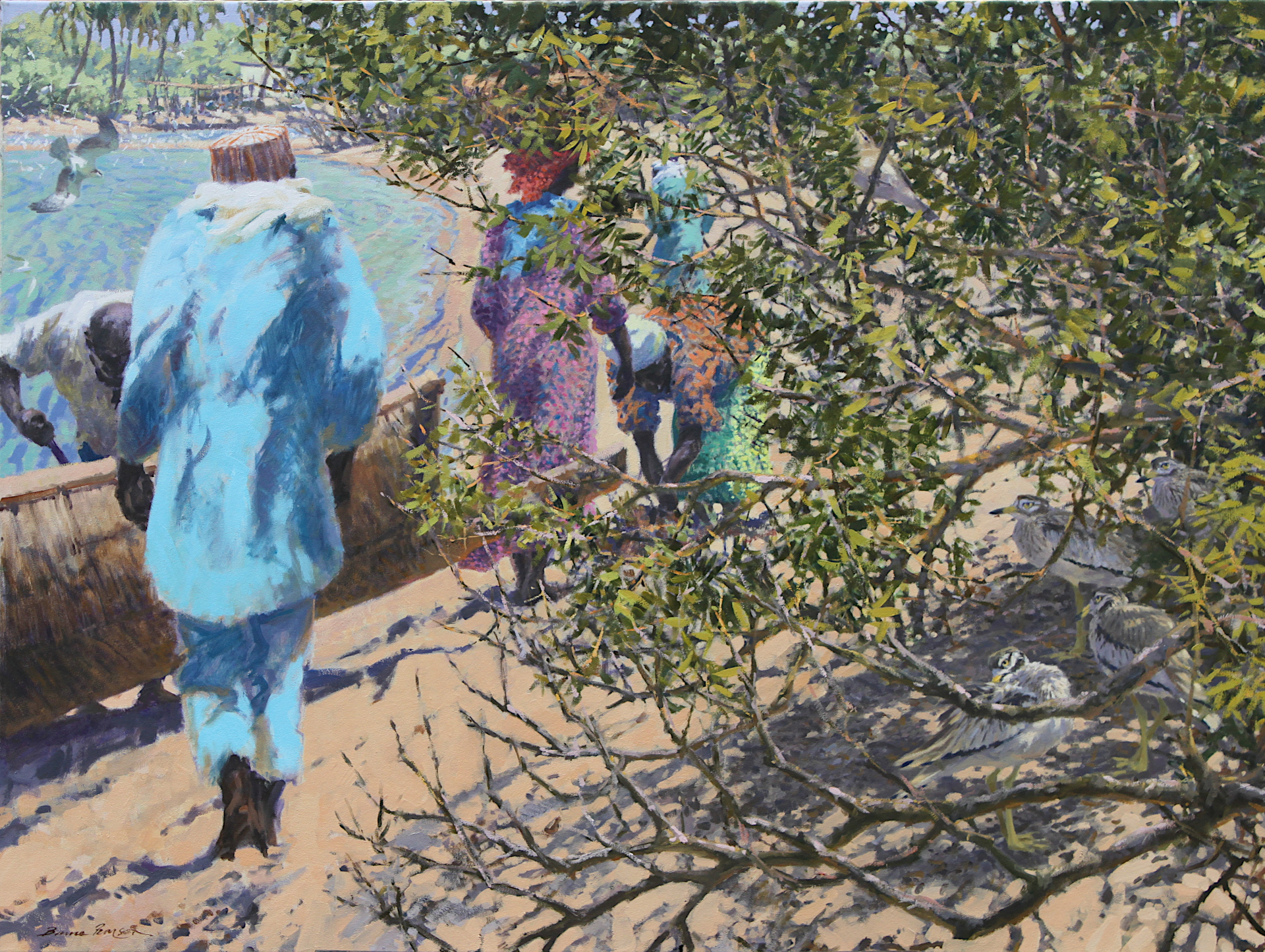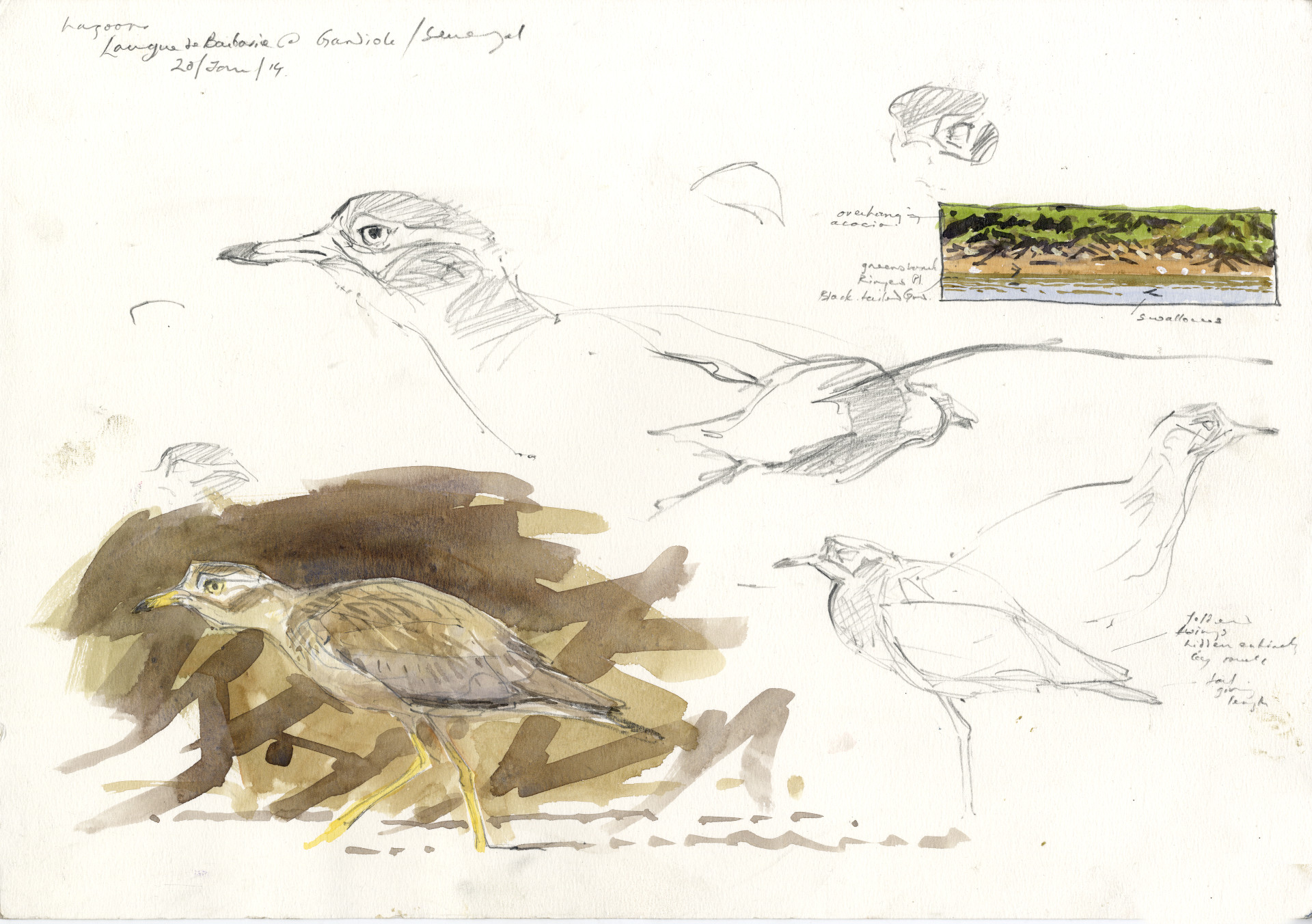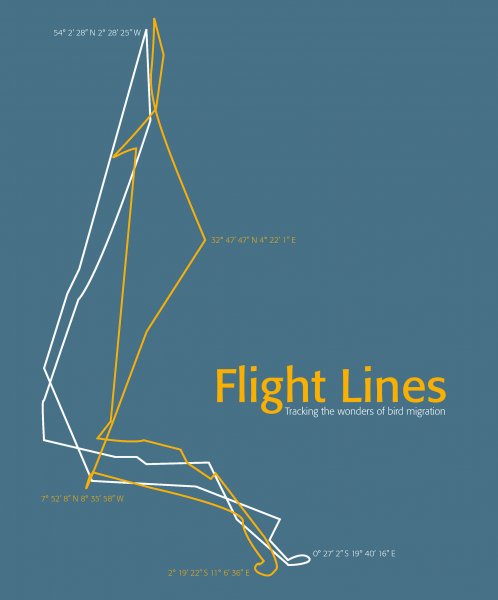In the StudioMarch - April 2021 |
| In the StudioMarch - April 2021
In January 2014, a team of four Society of Wildlife Artists (SWLA) artists accompanied Dr Phil Atkinson, the BTO’s Head of International Research on a trip to Senegal. I was thrilled to be one of the artists, joining Robert Greenhalf, Esther Tyson, and the much missed Greg Poole. By pairing artists, storytellers and photojournalists with the researchers and volunteers studying our summer migrants, the BTO wanted to tell the stories of our migrant birds, and the work being done to secure a future for them. The visit to Senegal was to experience the circumstances and challenges migrant birds face, especially in the Sahel region of West Africa. What were the birds doing and how were changes in these African habitats influencing their populations. Bringing artists and scientists together delivers different perspectives on the same scene. Both question what they see, yet they look with different eyes. While science can provide the all-important evidence upon which conservation decisions and policy can be made, it is our emotional attachment to wildlife that will ultimately drive forward conservation action. Art and science are key players in delivering effective conservation action for migrant birds and other wildlife. Now, at a time when many of our migrant birds are in decline, this fascination with migration has even more relevance. Bringing together the perspectives of artists and scientists can be used to help raise funds to support much-needed research, such as the work being done by the BTO and its partners, and to secure wider engagement with birds. The BTO’s Flight Lines project, a joint initiative with the Society of Wildlife Artists (SWLA), seeks to highlight the challenges that migrant birds face and bring to a wider audience the research and conservation work that is being done to help these birds. At one location on the coast I spent as much time observing the people of a shoreline community coming and going through the day walking between points on the shore and the village. It seemed to me like they were performing a myriad of tasks to do with boats and their catches, moving produce and sorting it then carrying it from one point to another. All the while in thickets just up from the tideline around the beach close to the people activity were small groups of Senegal thicknees ( Burhinus senegalensis) seemingly undistiurbed by the business and noise all around. In the higher twigs a busily feeding chiffchaff worked its way through the leaves, and over the lagoon an osprey hunted. In the studio composition I wanted to pull as many of those elements together as I could - especially the colour. |

Flight Lines: Tracking the wonders of bird migration
In January 2014, a team of four Society of Wildlife Artists (SWLA) artists accompanied Dr Phil Atkinson, the BTO’s Head of International Research on a trip to Senegal. I was thrilled to be one of the artists, joining Robert Greenhalf, Esther Tyson, and the much missed Greg Poole. By pairing artists, storytellers and photojournalists with the researchers and volunteers studying our summer migrants, the BTO wanted to tell the stories of our migrant birds, and the work being done to secure a future for them. The visit to Senegal was to experience the circumstances and challenges migrant birds face, especially in the Sahel region of West Africa. What were the birds doing and how were changes in these African habitats influencing their populations. Bringing artists and scientists together delivers different perspectives on the same scene. Both question what they see, yet they look with different eyes. While science can provide the all-important evidence upon which conservation decisions and policy can be made, it is our emotional attachment to wildlife that will ultimately drive forward conservation action. Art and science are key players in delivering effective conservation action for migrant birds and other wildlife. Now, at a time when many of our migrant birds are in decline, this fascination with migration has even more relevance. Bringing together the perspectives of artists and scientists can be used to help raise funds to support much-needed research, such as the work being done by the BTO and its partners, and to secure wider engagement with birds. The BTO’s Flight Lines project, a joint initiative with the Society of Wildlife Artists (SWLA), seeks to highlight the challenges that migrant birds face and bring to a wider audience the research and conservation work that is being done to help these birds.
|
Publisher: British Trust for Ornithology (BTO) Publication date: 31 July 2017 Dimensions: 220 pages, 20 x 2 x 24cm ISBN - 10 1908581778 |
© 2025 Bruce Pearson. All rights reserved.




